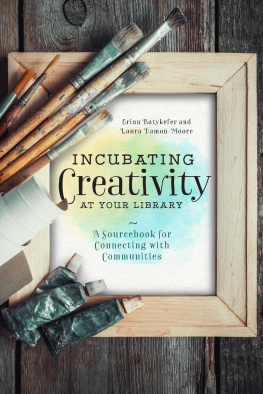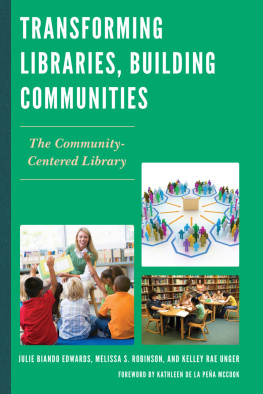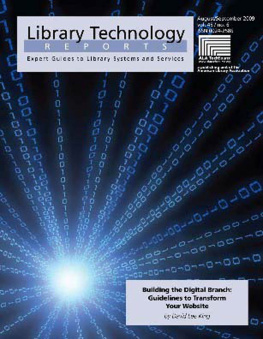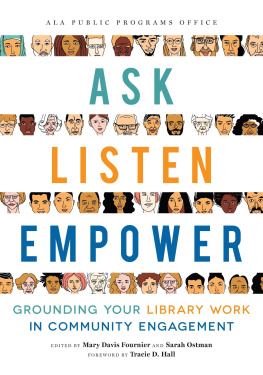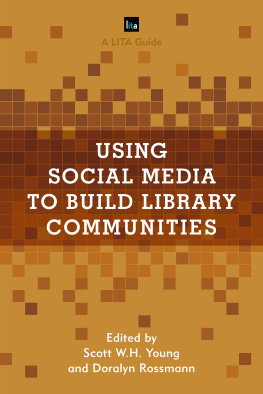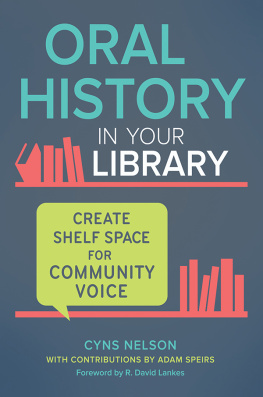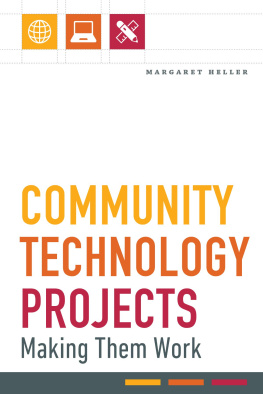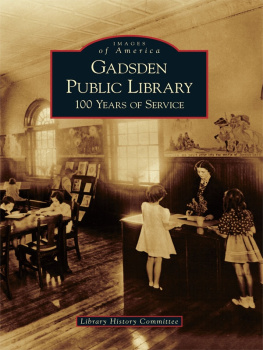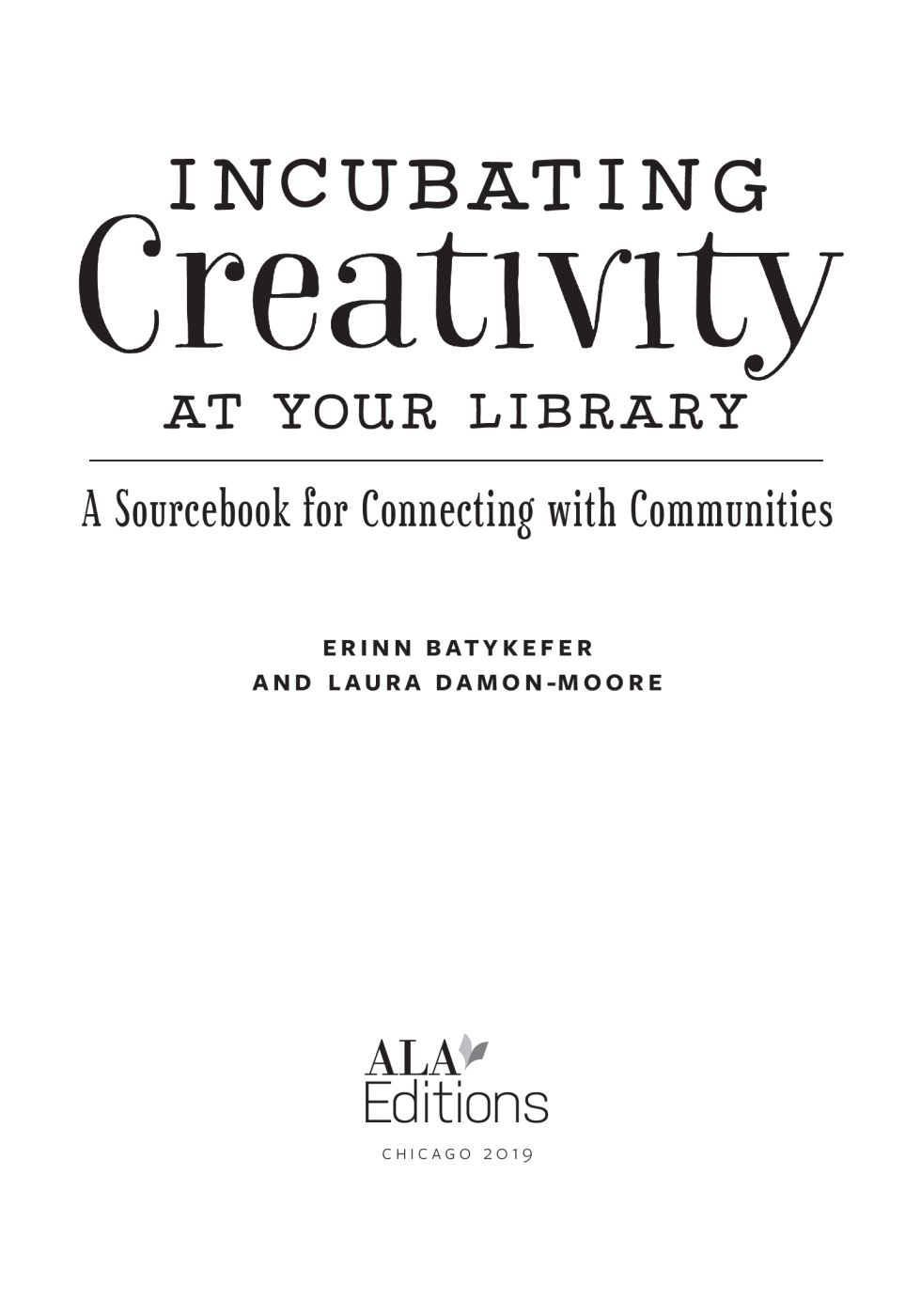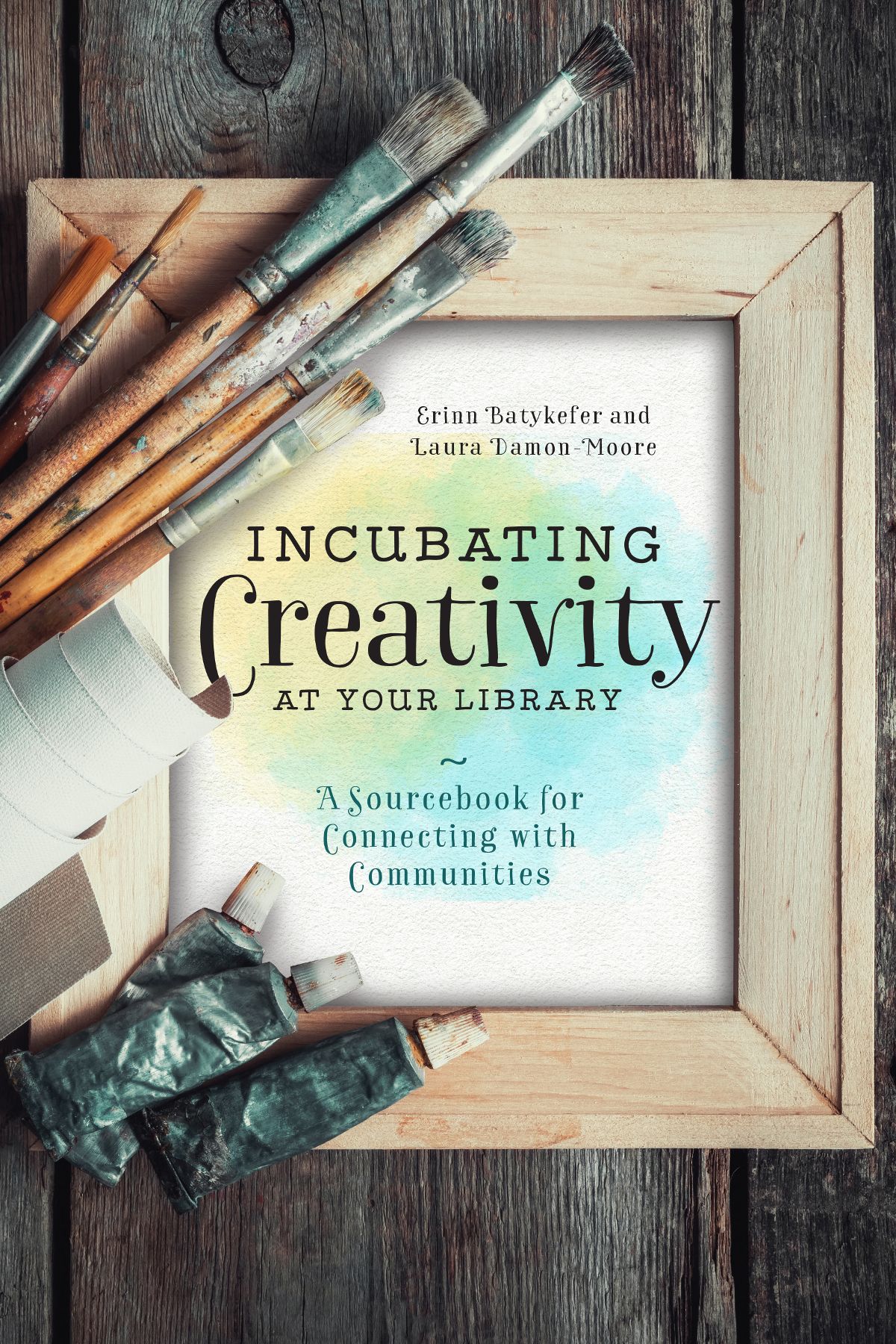
ALA Editions purchases fund advocacy, awareness, and accreditation programs for library professionals worldwide.
ERINN BATYKEFER earned her MFA degree in writing and her MLIS at the University of WisconsinMadison. She is the author of Allegheny, Monongahela (2007) and coauthor of The Artists Library: A Field Guide (2014) with Laura Damon-Moore. She cofounded and edited the Library as Incubator Project from 2010 to 2017, and was named a Library Journal Mover & Shaker in 2014 for her work. She lives in Pittsburgh, Pennsylvania.
LAURA DAMON-MOORE has an MLIS degree from the University of WisconsinMadison. She is currently a community engagement librarian at the Central Library of the Madison Public Library. She has spoken on community engagement and creativity in libraries for the American Library Association, the South by Southwest conference, and several state and county library associations. She was named a Library Journal Mover & Shaker in 2014 for her work as cofounder and editor of the Library as Incubator Project. In 2014 she coauthored The Artists Library: A Field Guide from the Library as Incubator Project with Erinn Batykefer.
2019 by Erinn Batykefer and Laura Damon-Moore
Extensive effort has gone into ensuring the reliability of the information in this book; however, the publisher makes no warranty, express or implied, with respect to the material contained herein.
ISBNs:
978-0-8389-1862-3 (paper)
978-0-8389-1878-4 (PDF)
978-0-8389-1902-6 (ePub)
978-0-8389-1903-3 (Kindle)
Library of Congress Cataloging-in-Publication Data
Names: Batykefer, Erinn, author. | Damon-Moore, Laura C., author.
Title: Incubating creativity at your library : a sourcebook for connecting with communities / Erinn Batykefer and Laura Damon-Moore.
Description: Chicago : ALA Editions, 2019. | Includes bibliographical references and index.
Identifiers: LCCN 2019007158 | ISBN 9780838918623 (paper : alk. paper) | ISBN 9780838918784 (pdf) | ISBN 9780838919026 (epub) | ISBN 9780838919033 (kindle)
Subjects: LCSH: LibrariesCultural programsUnited States. | LibrariesActivity programsUnited States. | Libraries and communityUnited States. | ArtsLibrary resourcesUnited States. | LibrariesMarketingUnited States.
Classification: LCC Z716.4 .B34 2019 | DDC 021.2dc23
LC record available at https://lccn.loc.gov/2019007158
Cover image chamillew / Adobe Stock.
EB: For David, for reminding me that writing is the most important work.
LDM: For my dad, a wonderful communicator and connector across departments and disciplines.
Both: We dedicate this book to all of the artists and librarians who contributed to the Library as Incubator Project for seven years. Your stories shaped our vision of what libraries and librarianship can be.
Contents
When you think about creativity in libraries, what comes to mind? Fine art books, coloring pages, Minecraft? ArtBots, a sewing class, a local music festival? Any variety of things probably comes to mind, and what does come to mind also varies widely between your colleagues, not to mention what occurs to the folks in your community. Every library, every community thinks differently about creativity and the role the library can play in a creative process. By and large, libraries want to be creative hubs. You want to offer access points that invite your community to learn new skills and expand their networks. You want to inspire, to engage. So how do you create a coherent, recognizable platform of access points so that your patrons can get the information they need, at the moment in their creative process when they really need it? How do you build, say, a platform that offers a local writer access to a historic newspaper database to find primary sources about the Spanish Influenza Epidemic of 1918; helps to spruce up her manuscript via the critique group that meets every Tuesday in the community room; and, using the current edition of Writers Market, identifies publishing companies and literary agents; and finally, organizes a public author signing when the book is published.
This hypothetical writer is not going to waltz into the library and accomplish all of these items in one visit; each of these access points will be used over many months and even years. Some of your patrons may know that all of these steps can be accomplished at the library, but what about the non-power user, or even the nonlibrary user? Is there a way to shake up your thinking about the way you approach and market your librarys resources and services in order to make it really easy for anyone to determine how they can use the library in their creative work?
We know theres a way. Its not perfect, but we dig it because its scaleable, and is inherently customizable to your library. Most importantly, this approach helps you go beyond just responding to community needs into actively building a platform with your community. This is not a book about what equipment to buy, or what books to stock, or how to design your space. Instead were going to work with what you already have going, whats already working, amplify it, and talk about some options for filling any gaps that you identify along the way. You can pick and choose what to use and how you use it.
This book came to be for a few reasons. In 2014 we wrote our first coauthored project, The Artists Library: A Field Guide from the Library as Incubator Project. That title was really geared toward library users, with some ideas and hands-on materials for library workers. This time around, were pleased to offer up some great ideas, ones that came out of our seven years spent collecting stories about the arts and libraries, to the folks who actually work at the desk, coordinate events and programs, and make decisions about what equipment to buy. We wrapped up active work on the Library as Incubator Project in November 2017, and this new book feels like an appropriate way to close out that project.
Were not claiming to be revolutionaries when it comes to library thinking and practice. We did not invent creativity, hands-on programming, or finding aids. In our Library as Incubator Project, what we were able to do was to connect with and talk with a lot of creative people, many of whom work in libraries, and collect those stories in a central place. When you start looking at all these individual stories, eventually you start to see themes and areas of potential growth that you just might miss otherwise. Unlike when we started the Library as Incubator Project, we also now have several years of professional library work under our beltsand definitely a much better sense of the practical, day-to-day workings of public and academic institutions.
While this book is certainly geared toward library workers who spend their days at the public service desk, in a program room, or putting the finishing touches on brochures and websites, we especially have in mind the worker who has encountered a we cant do that or this is the way weve always done it attitude from anyone at her institution, be it a supervisor, a colleague, or a board member. We sincerely hope that pulling together existing elements and filling in the gaps with community-driven additions is an easier way to build a creativity platform at your library than buying a bunch of expensive, underused equipment or throwing thousands of dollars at underattended and time-consuming programs.
Next page
